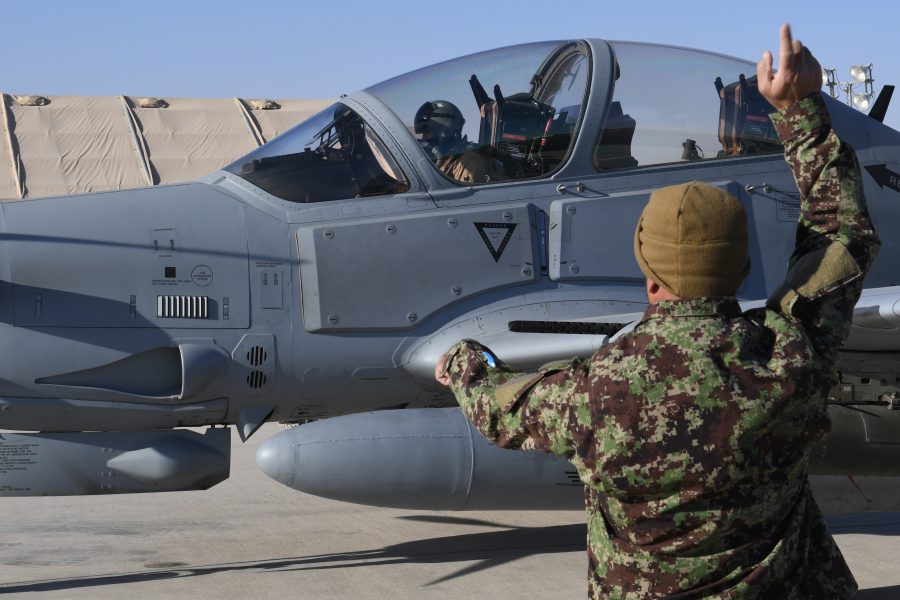The Afghan Air Force is under-utilizing aircraft and training the US is providing, which in turn is stressing older airframes and leading to ineffective air support, a Pentagon watchdog report states.
The Defense Department Office of the Inspector General’s quarterly report on Operation Freedom’s Sentinel in Afghanistan outlined several issues facing the ongoing US-led training mission in the country. While the Afghan Air Force’s fleet has grown to a total of 183 authorized aircraft as of the end of September, it is not being flown effectively as planned by Train, Advise, Assist Command-Air leaders, the IG states.
“A key concern for TAAC-Air advisors is misuse of the AAF fleet,” the report states. “One indicator of misuse is aircraft utilization rates.”
For example, the Afghan Air Force is being given modernized UH-60 Black Hawks to replace aging, Soviet-made Mi-17 helicopters. As of September, there were 40 UH-60s and 23 Mi-17s in the fleet. The new UH-60s are not being used as much as they can, with an average of 19 flight hours per month compared to the recommended maximum of 35. Meanwhile, the Mi-17s are being flown at an average of 38.6 hours per month, far exceeding the recommended rate of 25 monthly hours, the IG report states.
“While the AAF should be scheduling fewer flight hours for these aircraft to allow for routine maintenance, the high utilization rates reveal a potential for more serious maintenance requirements in the future that could cause the helicopters to go out of service unexpectedly and remain unusable for an extended period.”
The report also outlines shortfalls in how the AAF is planning and operating. For example, the AAF “often fails to adhere to its own aircraft tasking process,” which delays the delivery of critical supplies. Senior Afghan officials delay approving supply requests, which can cause gaps forcing combat operations to stop or make commanders take “unacceptable risks,” the report states.
The IG also states the US-trained Afghan Tactical Air Coordinators, a major initiative of TAAC-A in recent years, has been dramatically under used. The program is planning to field ATACs that can provide daytime and night close air attack and airdrop support to all Afghan Army corps by the end of 2022. However, weak oversight of this program has meant the AAF has not met an interim goal of daytime airdrop and resupply capability by January.
TAAC-A has trained more than 400 ATACs since 2013, “but failed to create a sustainable air-to-ground integration capability,” the report states. There are just 46 ATACs and 24 air liaison officers serving in the AAF, meaning just 2.5 percent of MD-530 helicopter strikes and 7.5 percent of A-29 airstrikes were coordinated by a trained ATAC. The Afghan National Army is “often unwilling” to integrate ATACs into planning and mission execution, instead having undertrained tactical leaders talking with aircraft.
